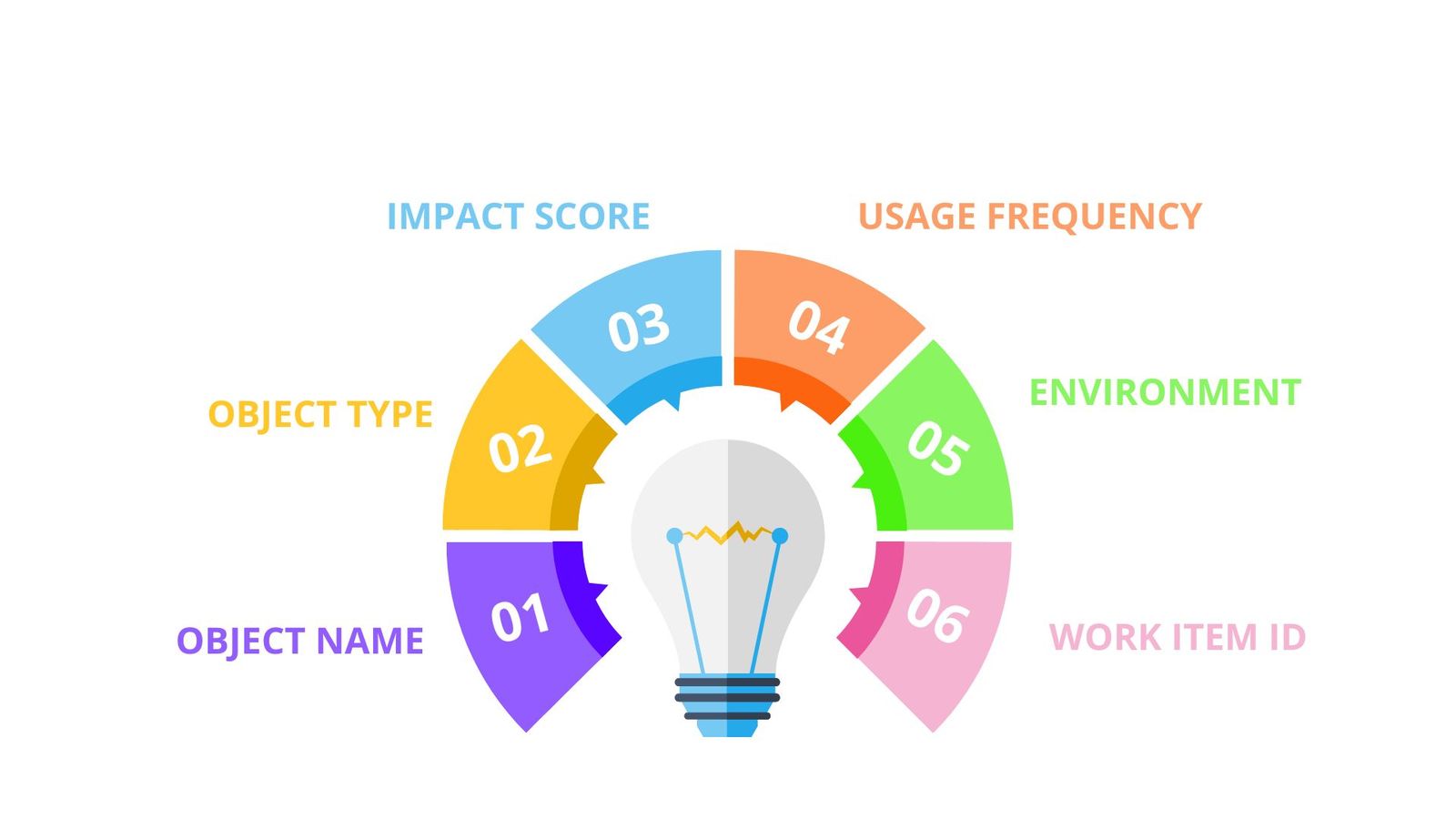SAP S/4HANA 2022 - Planning your Custom Code Remediation
One of the most important concerns for organizations looking to move from the traditional ECC to S/4HANA is that of SAP custom code migration. But, why is it a concern? Why should you adapt your custom code during the system conversion process?
You would have invested heavily in your ABAP custom code developments for the past several years of using SAP. Traditionally, in the SAP ERP business suite, you can look into the standard SAP code, modify or enhance it to suit your business needs. Any functional module can be used without any restriction. There were no custom code compatibility issues with the subsequent SAP Business Suite releases. It is a very flexible approach and allows you to work in an open-source manner. But, on the flip side, it creates several dependencies between the SAP code and the custom code.
But S/4HANA is a whole different ball game. SAP S/4HANA simplifies the business process and the SAP code within it. In some cases, the custom code in ECC may not be compatible with S/4HANA. A few of the custom codes may not perform as expected or may result in syntactic errors or dumps. Therefore, the custom ABAP code needs to be adapted to S/4HANA
Introduction
With SAP S/4HANA systems, custom code is frequently the cause of issues, and it can be challenging to determine whether your data complies with best practises. Before upgrading, users could assess the quality of their custom code using a tool offered by SAP.
The report it generates can then be used by customers to fix any code issues. Before implementing SAP S/4HANA, bugs in custom code should be fixed to avoid upgrade issues and ensure a smooth transition to the new system.
The SAP custom code migration process
The custom code related process basically consists of two major phases:
-
Before SAP S/4HANA System Conversion
During the assessment and preparation phase of the conversion, you can assess your system and get rid of the unused custom codes and objects. You can also determine the custom codes which should be adapted to S/4HANA in this stage.
-
During the SAP S/4HANA System Conversion
During the realize phase of the system conversion, you must adapt or remediate your custom code to suit the new SAP S/4HANA software. You must also optimize the code performance for the HANA database.
In this article, we’ll explain how KTern automates the SAP custom code impact analysis process and provides actionable insights to plan your SAP S/4HANA system conversion. KTern performs this action in the Discover phase of the Activate Methodology and it is part of the Impact Analysis module.
KTern's Custom Code Impact Analysis
KTern is an all-in-one product suite built for SAP Digital Transformations. With decades worth of SAP Tribal knowledge combined with automation, governance and collaboration capabilities, KTern is built to help the existing ECC customers migrate to S/4HANA. KTern covers the entire lifecycle and guides you before, during and after the conversion. Its inbuilt S/4HANAPEDIA rule engine combined with several modules eases the transition from SAP ECC to SAP S/4HANA.

Using the custom code impact analysis feature of KTern, you can assess and analyze the syntactical change impact of all the custom Z tables, Z programs, and Z objects. It is a pre-requisite to check the impact on the standard SAP code and the custom code before moving to S/4HANA. Without completing this step, you cannot proceed further in the system conversion process.
In addition, you can find out SAP S/4HANA Assessments using KTern in this article.
An Example of Custom Code Impact
One of the simple examples of the impact of custom code in S/4HANA is the material length field extension from 18 to 40. So, what is the impact of this field length extension? If the custom-developed material numbers of 18-character length are used along with the new material number of 40-character length, then one of the following will happen:
- Data may be lost while moving the material number from 18 to 40 characters
- Type conflicts may occur if the material number field is passed as a parameter to a program
- Length conflicts at comparison with SAP material number
- Length conflicts at concatenation with SAP material number
In all the above cases, the custom code is incompatible. You must modify and redefine your custom material number and code to the new S/4HANA material number type.
This is just one example. Similarly, there are several changes and simplifications that occur while moving to S/4HANA. There may be changes in the field type, field length and tables. Also, some fields or tables may have been removed altogether, some tables may have been merged etc. It is necessary to determine the amount and impact of such changes before moving to S/4HANA. Later, during the actual conversion, you must remediate the custom code so that it is compatible with S/4HANA.
Features of Custom Code Impact Analysis
In case of an SAP S/4HANA system conversion, you must analyze the existing custom code with respect to SAP S/4HANA readiness, and of course with respect to business needs and requirements.
KTern automates the process of SAP custom code impact analysis. As a result, this section gives you an analytical view of the custom code present in an SAP ECC system. After connecting an ECC system, KTern runs the custom code impact analytics check and analyzes the custom programs and objects present in a system.

KTern helps you generate a list of findings where your custom code does not comply with the scope and data structure of SAP S/4HANA. It also helps in estimating the effort required for custom code adaptation.

The key activities that can be performed using KTern with respect to the custom code are:
- Identification of affected custom objects
- Scope definition of custom code migration
- Define which custom code needs to be taken to S/4HANA
- Define usage frequency
- Custom code analysis parameters
- Syntactically incompatible change of existing functionality
- Functionality not available but functional equivalent available
- Functionality not available
- Change of existing functionality with a performance impact
Custom Code Dashboard
The custom code dashboard then gives an overview of the custom objects present in the connected SAP system. The analytics dashboard depicts the following KPIs.
- Custom code impact level
- Number of custom objects
- Number of impacted custom objects
- Custom objects by remediation types (simplified objects, S/4HANA syntax errors, database operations, critical statements, field length extensions, SELECT without ORDERBY)
- Impact score of each custom object
KTern’s AI-powered rule engine automatically calculates the impact score of a custom program based on its analysis parameters and the number of impact cases. For example, if the custom program has many impact cases and its equivalent functionality is not available in S/4HANA, then it is given a high impact score.

The Custom Code Dashboard also provides a chart depicting a usage vs impact score of the custom objects. This helps in prioritizing the high impact code with high frequency of usage. You can eliminate the low usage custom programs and objects after taking a call with the business stakeholders.

Custom Code Information Wizard:
KTern provides the basic information on each custom program and object in the custom code information wizard. It consists of the following basic information:

- Impact and Optimization score
- Security Score
- Usage Frequency and Priority
- Stakeholders
- References and relevant discussions
Additionally, the project manager or the ABAP lead can assign these custom codes to the appropriate ABAPERs (stakeholders) for remediation right from the Custom Code Center. The stakeholders can converse and upload files.
In a result, the custom code center offers a 360-degree perspective on a custom program and a platform for constant communication with other project stakeholders.
Inferences out of Custom Code Impact Analysis
As discussed so far, KTern provides a detailed and comprehensive analysis of each impacted custom program and custom object. Based on the information provided by KTern, you can plan your SAP S/4HANA system conversion with confidence.

You can easily estimate the required amount of time and effort for the conversion, the number of resources required, the number of conversion runs to be planned etc. You can prioritize your custom code remediation. The high frequency, high impact score custom code and objects can be remediated first. You can also archive certain unused custom objects after evaluating its functional importance and taking a call with the business stakeholders.
KTern also provides the roadmap and effort for the S/4HANA system conversion based on the results from the custom code impact analysis.
How is KTern’s Custom Code Impact Analytics different from that of its competitors?
Custom Code Impact Analysis is an essential pre-check before migrating to S/4HANA. Tools such as Gekkobrain and Panaya perform a check and provide the impact of custom code migration to S/4HANA. Both the products use SAP’s standard tools which consume a lot of time to set up the infrastructure and install relevant OSS Notes. It takes three or four weeks to complete this assessment.
However, the differentiating factor of KTern is that it completes the custom code impact analysis in a span of few minutes depending on the number of custom objects in the system. The time factor and ease of usage in KTern makes it one of the most user-friendly SAP S/4HANA conversion tool in the market.
KTern.AI Custom Code Adaptation for S/4 HANA System Conversion
In addition, KTern provides a detailed analysis of each custom program and specifies its impact score, optimization score, usage frequency, stakeholders and much more. KTern also specifies the functional module to which a particular custom code belongs. All this will help in better decision making and planning the route to S/4HANA.
A Digital Transformation project is not dependent only on data and process flows alone. One of the critical factors for the success of any Digital Transformation project is the active collaboration of the stakeholders. And, KTern provides a single platform where everyone can collaborate and have a clear view of the happenings of the project. With respect to the custom code analysis, KTern saves the results from the custom code impact analysis and uses it for custom code adaptation/remediation in the subsequent phases of the conversion. It provides a forum to collaborate, assign stakeholders and take everyone along the journey of SAP S/4HANA system conversion.
Next Steps
Now that you know how to automate the SAP Custom Code Impact Analysis in KTern and the deductions you can make out of it, you might want to get a first-hand feel of KTern and its other features which help automate and govern SAP projects from start to finish. If you would like a guided demo of the product from one of our product engineers, kindly get in touch with us by submitting a message at Contact Us.



